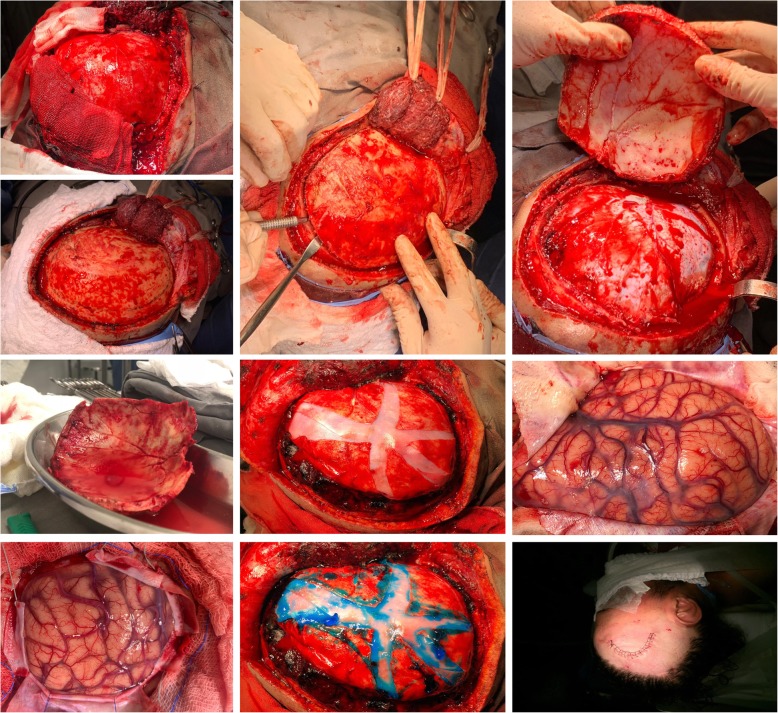Fig. 4.
Open craniotomy. Patient lies on an operating table and receives general anesthesia. The head is set in a three-pin skull fixation device attached to the operating table, in order to hold the head standing still. Once the anesthesia and positioning are established, skin is prepared, cleaned with an antiseptic solution, and incised typically behind the hairline. Then, both skin and muscles are dissected and lifted off the skull. Once the bone is exposed, burr holes are built in by a special drill. The burr holes are made to permit the entrance of the craniotome. The craniotomy flap is lifted and removed, uncovering the dura mater. The bone flap is stored to be replaced at the end of the procedure. The dura mater is then opened to expose the brain parenchyma. Surgical retractors are used to open a passage to assess the hematoma. After the hematoma is drained, the retractors are removed, the dura mater is closed, and the bone flap is positioned, aligned, and fixed with metal clips. Finally, the skin is sutured

